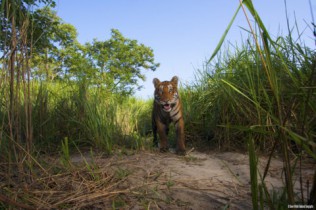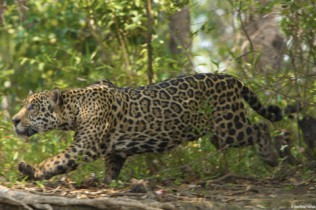As more and more large animals are driven to the brink of extinction, one of the primary challenges facing conservationists lies in counteracting the belief that such wildlife endangers human settlements and livelihoods. A number of organizations are now aiming their work at alleviating conflict between humans and large animals, with tourism identified as an important pathway for preserving dwindling wild populations.

Conflicts tend to arise over resource competition, such as in Orissa, India, where the growth of farming and mining drove elephants to expand grazing areas and resulted in the near-doubling of elephant-caused damage over the past six years. Often, local people respond to the threats posed by these animals simply by killing them. “To those people whose livelihood they are impacting, they’re just a pest,” said Luke Hunter, executive vice president of Panthera, an organization focused on conservation of big cat populations, in an interview with Ethical Traveler.
Hunter identified two primary features key to a successful conservation program for large animals: reducing the sources of conflict and adding value to the animals themselves. Organizations across the globe are working to reduce sources of conflict between human development and large animal conservation. For instance, the Tiger Response Team in Russia addresses locals’ concerns about tiger encroachment by using nonlethal means, like flare guns and relocation. Other organizations, including Panthera and the Wildlife Conservation Society’s Jaguar Conservation Program, focus on educating farmers to improve livestock protection, by building stronger corrals or keeping dogs to warn of approaching predators. In Kenya, where climate change is believed to have caused an upsurge in elephant-related damage, the Ministry of Environment and Mineral Resources encourages community-based adaptations such as investing in improved water and storage systems.
Adding value to the animals in the eyes of locals is often the more difficult challenge. “It is often the case that the perception is greater than the reality, but perception can be a tough thing to counter when you have a strong cultural belief that predators are your enemy,” said Hunter. “Tourism is the easiest, most obvious solution.”

Tourism adds value to animals by creating a local industry based on their presence. It is already a staple of conservation in areas like Africa, since big cats and elephants are highly visible on African plains. However, Hunter stresses, more densely forested areas require more creative thinking. India is discussing phasing out “tiger tourism,” particularly in core tiger zones, because of the disruption lodges and jeeps cause in sensitive areas.
However, better models for ecotourism in these regions do exist. One alternative, as Hunter pointed out is the use of homestays. Visitors have the possibility of seeing big cats , but in the context of experiencing what life is like for local people. In the Peruvian Amazon, ecotourism operators have partnered with local populations to create ecotourism lodges, incentivizing the protection of large species like the giant otter and harpy eagle.
Still, not all claims of ecotourism are supported by the evidence, Hunter warned. Travelers should always do their research before going on a supposedly conservation-friendly tour. Only if operators truly walk the talk will tourism have the chance to truly make a difference in the survival of endangered wildlife.
Note: A previous version of this article incorrectly stated that tiger tourism had been banned in India since May 2010. In fact, such a ban is still under consideration. The article has been updated to reflect this correction. We apologize for the error.
Read Ethical Traveler's Reprint Policy.
